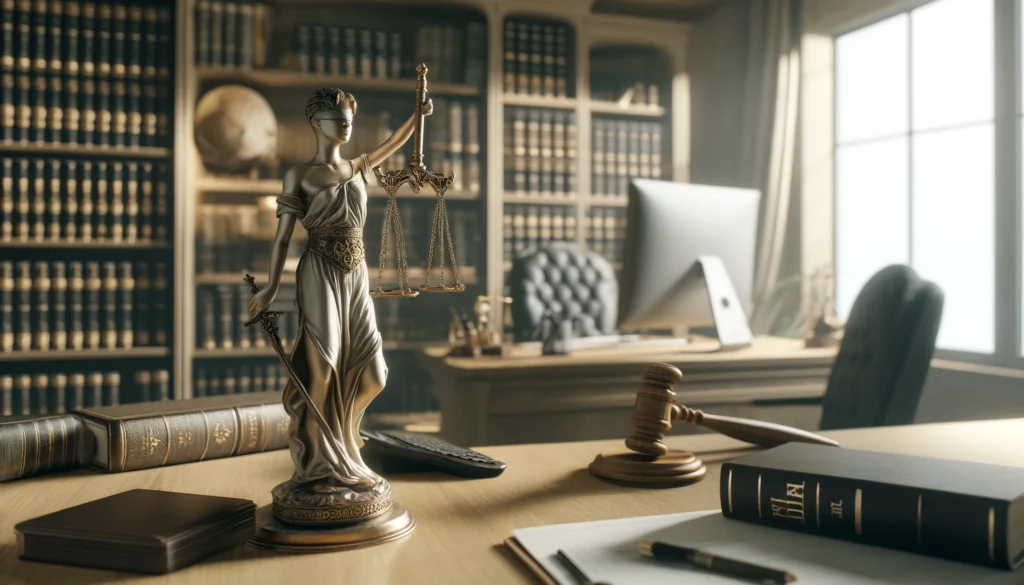
Setting the Stage: Why Precision Matters in Character Letters
When a defendant stands before a judge awaiting sentencing, every word submitted on their behalf can potentially tip the scales. Character letters play an instrumental role in painting a holistic picture of the individual beyond the crime they’ve committed. Thus, the precision and emotional nuance in these submissions are paramount.
In these trying moments, the smallest error or lack of genuine sentiment can undermine the letter’s credibility. This is where technology, specifically AI, can offer invaluable assistance. Leveraging AI tools, paralegals can finely tune the balance between meticulous detail and heartfelt emotion, ensuring that each character letter genuinely represents the defendant’s merits.
Understanding how to effectively integrate AI into this process is key to producing impactful character letters. Let’s dive deeper into this.
Meet Your Digital Assistant: ChatGPT and LLMs
ChatGPT, a large language model (LLM) developed by OpenAI, stands at the forefront of these AI tools. Built on advanced natural language processing (NLP) capabilities, ChatGPT can generate coherent, contextually relevant, and emotionally nuanced text quickly and efficiently.
For paralegals, the real value lies in how these tools can streamline the drafting process. By feeding the AI the right prompts, it can aid in crafting persuasive, accurate character letters, allowing legal professionals to focus more on fine-tuning and less on drafting from scratch.
Now that we understand the basics of these tools, let’s examine what makes a character letter truly persuasive.
Also read:
The Anatomy of a Persuasive Character Letter
A persuasive character letter hinges on several key components:
- Introduction: Clearly state your relationship to the defendant and the purpose of the letter.
- Body: Include specific anecdotes showcasing the defendant’s character, emphasizing positive traits, community contributions, and personal hardships faced.
- Conclusion: Reiterate support and heartfelt pleas for leniency, underscoring the impact of a potentially reduced sentence on the defendant’s future.
Common pitfalls include generalizations, lack of supporting details, and overly formal language which can alienate rather than persuade. The essence of these letters should be personal and heartfelt, illuminating the defendant’s humanity.
Understanding the structure helps, but how can we leverage AI to ensure we get it right every time? Enter prompt crafting for ChatGPT.
Also read:
Crafting the Perfect Prompt: Getting the Most Out of ChatGPT
Effective prompt creation is central to harnessing ChatGPT’s capabilities. The clearer and more specific the prompt, the better the output.
Some techniques for crafting effective prompts include:
- Specificity: Instead of “write a character letter,” opt for “write a heartfelt character letter for John Doe who has volunteered for local shelters.”
- Context: Highlighting context ensures relevance. Example: “John Doe, who supports his family while juggling shifts at a warehouse, needs a character letter for a sentencing hearing.”
Examples of detailed prompts:
- “Compose a character letter for Jane Smith, a single mother who, despite her past mistakes, has shown incredible resilience by working two jobs and tutoring neighborhood children.”
- “Draft a character letter for Mark Johnson, a community leader known for organizing annual charity drives, who is currently facing a sentencing hearing.”
With the right prompts, AI can produce drafts that are not only coherent but deeply empathetic. Let’s delve deeper into leveraging tone and emotion.
Also read:
Leveraging Tone and Emotion: Techniques for Humanizing AI Output
Ensuring the text generated by ChatGPT resonates on an emotional level requires guiding the AI to emphasize empathy and sincerity. This can be achieved through specific prompts:
- “Write a genuine and heartfelt character letter highlighting Jane’s contributions to our community, particularly her selfless acts during the holiday season.”
- “Create a sincere and emotionally compelling letter that underscores how Mark’s leadership has inspired local youth and strengthened community bonds.”
Prompts that incorporate personal anecdotes or achievements help capture the emotional essence:
- “Discuss Jane’s commitment to her children’s education and how she tutors other kids in the neighborhood despite her busy schedule.”
- “Highlight Mark’s efforts in organizing events that raise funds for local schools, and how these initiatives have positively impacted many families.”
Balancing professional language with these personal touches ensures the letter remains credible. Now, let’s explore how AI can aid in rapid yet thorough research.
Also read:
Streamlining Research: Quick Tips for Gathering Background Information
ChatGPT can also assist in compiling relevant facts and testimonials necessary for a comprehensive character letter.
Effective techniques include:
- Background compilation: “Summarize John Doe’s volunteer work at local shelters, focusing on specific events and commendations he has received.”
- Fact validation: Always cross-check AI-gathered information with reliable sources or documentation to ensure accuracy.
Efficiently summarizing data: Once the facts are gathered, you can prompt ChatGPT to weave them into coherent narratives: “Create a narrative that includes John’s various volunteering events, highlighting testimonials from those he’s helped.”
Having a comprehensive draft, let’s focus on fine-tuning and personalizing this AI-generated content.
Also read:
Fine-Tuning and Personalization: Adding the Human Touch
While AI can provide a solid foundation, human review is crucial for personalization. Strategies for enhancing AI-generated content include:
- Review and edit: Scrutinize the draft for coherence, tone, and relevance. Adjust sections to ensure they align with the defendant’s unique situation.
- Case-specific details: Incorporate anecdotes or personal experiences not captured by AI. Example: “Remember the time Jane organized a fundraiser for the local animal shelter?”
- Proofreading: Ensure the letter maintains a consistent tone, avoiding abrupt shifts that may jar the reader.
Integrating these human touches ensures that the character letter resonates authenticity and empathy. Let’s remain mindful of ethical considerations in this process.
Also read:
Ethical Considerations: Maintaining Integrity with AI Assistance
Ensuring accuracy and authenticity in AI-assisted documents is a critical ethical responsibility. To maintain integrity:
- Verify all facts presented in AI-generated content.
- Avoid over-reliance; AI is a tool, not a replacement for human judgment.
Additionally, ensure the letter’s content genuinely reflects the defendant’s character, avoiding embellishments or falsehoods that could compromise credibility.
Having laid out these guidelines, here’s a final checklist to ensure your letter is impeccable.
Final Checklist: Ensuring Your Letter Hits the Mark
- Verify all facts and testimonials included.
- Ensure anecdotes are relevant and impactful.
- Proofread for tone, coherence, and emotional resonance.
- Double-check legal and ethical standards are met.
Avoid last-minute errors by following this checklist meticulously, ensuring your character letter fulfills its purpose effectively.
Finally, let’s reflect on the power and benefits of integrating AI tools in legal workflows.
Also read:
Conclusion: Empowering Paralegals with AI Tools
By harnessing AI tools like ChatGPT, paralegals can craft more precise, emotionally resonant character letters. The balance of human oversight and technological assistance empowers legal teams to produce impactful, accurate documents quickly and efficiently. Continuously learning and adapting to integrate these tools can enhance legal workflows, ensuring every effort to present a defendant’s best side is maximized.


